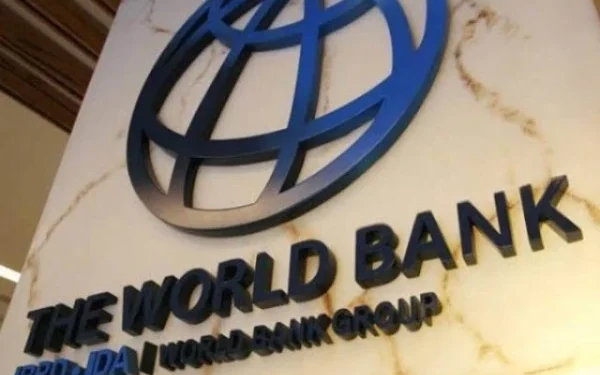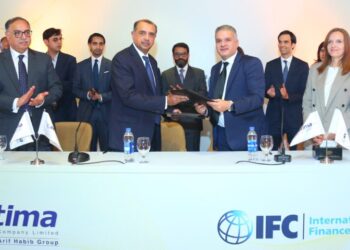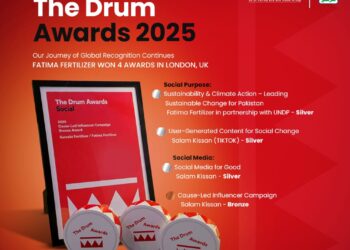Islamabad: The World Bank is set to approve a $20 billion loan package for Pakistan and the agreement will be signed on January 14, while its two subsidiaries will assist in obtaining another $20 billion in private loans, taking the total package to $40 billion.
This will be the first major 10-year package globally whose funded projects will be protected from political changes. The package will focus on only six sectors. These six targeted sectors have the support of a wider political spectrum and are expected to be unaffected by any change in government under the five-year constitutional term scheme in Pakistan between 2025 and 2035. The official document and background discussions on the package with Pakistani officials show that the Pakistan Country Partnership Framework 2025-35 aims to improve social indicators in the most neglected but critical sectors.
These sectors include health, education and climate change. A Pakistani official involved in the work on the framework said that the World Bank has selected Pakistan as the first country where it is going to introduce a 10-year partnership strategy. According to the draft framework, the World Bank’s total lending for the fiscal years 2025 to 2035 will be about $20 billion. The Country Partnership Framework will be approved by the World Bank’s Board of Directors on January 14 for the period 2025 to 2035.
After the approval, Martin Reiser, the World Bank’s Vice President for South Asia, is also expected to visit Islamabad. The 10-year Country Partnership Framework sets out the outcomes of six goals focusing on key areas of development where Pakistan is lagging behind. According to the plan, stunting will be reduced by 30 percent in targeted districts over 10 years. Education deficits will be reduced by 60 percent. The World Bank’s concessional lending arm, the International Development Association (IDA), will lend $14 billion of the $20 billion. The remaining $6 billion is likely to be provided through a relatively expensive window, the International Bank for Reconstruction and Development (IBRD).
However, these loans will be subject to a review of IDA funding over the years. The review will look at Pakistan’s status and performance, including its sustainable development financing policy and its debt risk index. In addition to the $20 billion in loans to the government of Pakistan, the new Country Partnership Framework will also support another $20 billion in private lending through two other World Bank entities, the International Finance Corporation and the Multilateral Investment Guarantee Agency (MIGA). This will bring the total package to $40 billion, but official lending will be equal to $20 billion. The new World Bank framework will focus on six sectors but will phase out lending from 10 low-impact sectors. Sectors such as transport, power transmission, telecom, mining and urban infrastructure will not receive IDA or IBRD funding.
The World Bank will support these sectors through investments provided through IFC and MIGA guarantees for foreign investment. The World Bank will also exit tertiary health care, higher education, vocational and technical training, logistics and entrepreneurship. The World Bank’s new strategy is to move away from short-term macro-fiscal adjustment programs and fragmented small-scale investment in sectors that are critical for sustainable development and growth, through more selective, sustained, and large-scale investments. The documents say the World Bank will continue to support reforms to promote growth and investment, as well as create more fiscal space. The 10-year planning framework will help shield the program from frequent shocks to priorities caused by the country’s unstable politics. According to the World Bank’s assessment, requests made after changes in government have fragmented the World Bank’s portfolio and weakened its impact.
The World Bank has said that the reasons for low investment and low growth include inconsistent macroeconomic policies that arise from an unstable political environment, a complex and inconsistent business environment. Recent political instability has exacerbated the negative impacts of COVID-19, the price shocks of rice, and the 2022 floods. According to a recent World Bank assessment, Pakistan’s economy is slowly recovering from the recent economic crisis. The first of the six areas of focus is to reduce child stunting, especially among adolescent girls, mothers, and newborns, by focusing on the health and nutrition and family planning agenda. The World Bank loan is expected to provide quality health, nutrition, and population services to 54 million people.
18 million women will use modern contraceptives and 60 million people will be provided with water, sanitation and hygiene services. The second target area is to reduce the learning gap by improving enrollment. Ensuring attendance in quality primary and secondary schools. Particular attention will be paid to girls, the majority of whom are out of school. About 12 million children will be targeted for improved education due to World Bank lending. The third area is to increase climate resilience. This will provide food security to about 17 million people and provide better resilience to climate hazards to 78 million people. Decarbonizing the environment is the fourth area. The World Bank’s interventions will reduce greenhouse gas intensity. In particular, the drivers of air pollution emissions will be addressed in the energy sector. 10 gigawatts of renewable electricity will be generated through planned interventions.
The fifth area is to increase fiscal capacity by increasing revenue collection and rationalizing expenditures. The proposed interventions are expected to increase the tax-to-GDP ratio to 15 percent. Enhancing private investment to improve productivity is the sixth area and this area will target private investment. According to World Bank estimates, private investment of about $20 billion will be facilitated.

























